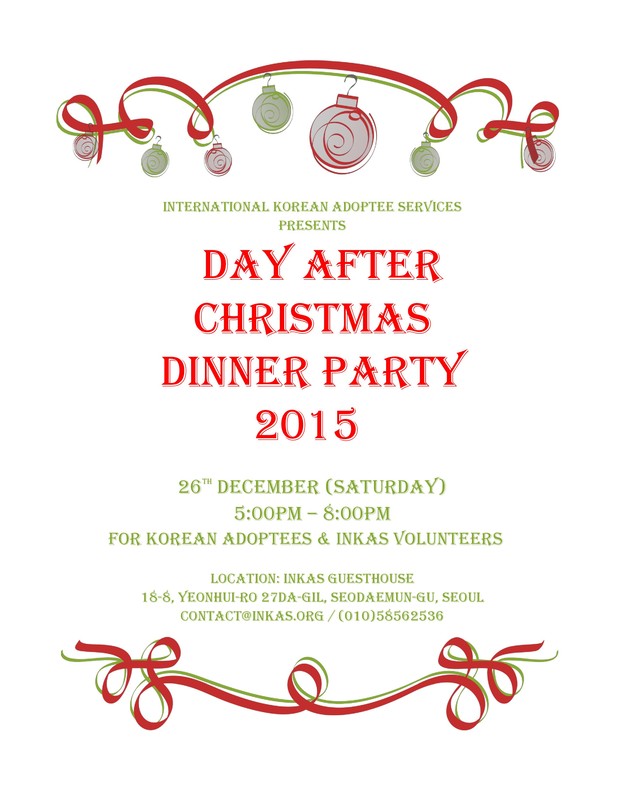건강검진을 하기위해 보건소를 방문하는 여자 입양인 통역도와 주실 봉사자 구합니다.
일시: 3/14(월) 10:00(2시간 이내 소요 예상)
장소: 서대문보건소 로비(서대문구 연희로 242)
감사합니다.
Add/Remove email notification | RSS Feed
Written by on date 2016-03-09 in Ask Volunteer .
건강검진을 하기위해 보건소를 방문하는 여자 입양인 통역도와 주실 봉사자 구합니다.
일시: 3/14(월) 10:00(2시간 이내 소요 예상)
장소: 서대문보건소 로비(서대문구 연희로 242)
감사합니다.
Written by on date 2016-03-04 in Ask Volunteer .
건강검진을 하기위해 보건소를 방문하는 입양인 통역도와 주실 봉사자 구합니다.
일시: 3/14(월) 10:00(2시간 이내 소요 예상)
장소: 서대문보건소 로비(서대문구 연희로 242)
감사합니다.
Written by on date 2016-03-02 in Ask Volunteer .
3/6(일) 저녁 통역도와 주실 봉사자 구합니다.
시간: 18:00 ~20:00(약 2시간)
장소: 6호선 상수역 부근
가능한 시간 명시해서 댓글 달아 주십시오. 감사합니다.
Written by on date 2016-03-02 in Ask Volunteer .
3/4 오후 4시 이후 2시간 가량 통역해 주실 봉사자 구합니다.
장소: 상수역(6호선)
가능한 시간 명기해서 댓글 주십시오. 감사합니다.
Written by on date 2016-02-04 in Ask Volunteer .
2/29(월) 오전 봉사 가능하신분 구합니다. 친부모와 만나는 입양인 통역 입니다.
장소: 동방사회복지회
시간: 오전 11시(2시간 소요 예상함)
댓글 주십시오. 감사합니다.
Written by on date 2016-01-19 in Ask Volunteer .
1/21 노동청을 방문하는 미국 입양남성 통역도와주실 봉사자 구합니다.
오후 1시 30분 을지로 1가에 있는 장교빌딩/노동청에서 만나기 원합니다.
시간 되는분 댓글 주십시오. 감사합니다.
Written by on date 2016-01-19 in Ask Volunteer .
1/21 노동청을 방문하는 미국 입양남성 통역도와주실 봉사자 구합니다.
오후 1시 30분 을지로 1가에 있는 장교빌딩/노동청에서 만나기 원합니다.
시간 되는분 댓글 주십시오. 감사합니다.
Written by on date 2016-01-12 in Ask Volunteer .
미국입양여성에게 한국어 지도해 주실 여성 봉사자 구합니다.
장소는 홍대부근이며 월요일 또는 금요일을 원합니다.
가능한 시간/요일 명기해서 댓글 주시기 바랍니다.
Written by on date 2016-01-06 in Ask Volunteer .
네델란드 입양여성의 통역도와 주실 봉사자 구합니다. 시간 되시는 분 댓글 기다립니다.
일시: 2016/1/10(일) 14:00 ~ 18:00
만남장소: 이태원 지하철역 근처
Written by on date 2015-12-23 in Ask Volunteer , Events , Notices .
We would like to have small year end party with korean adoptees and volunteers.
If you are free to join, please let us know via E-mail(contact@inkas.org) notice.
Thanks
